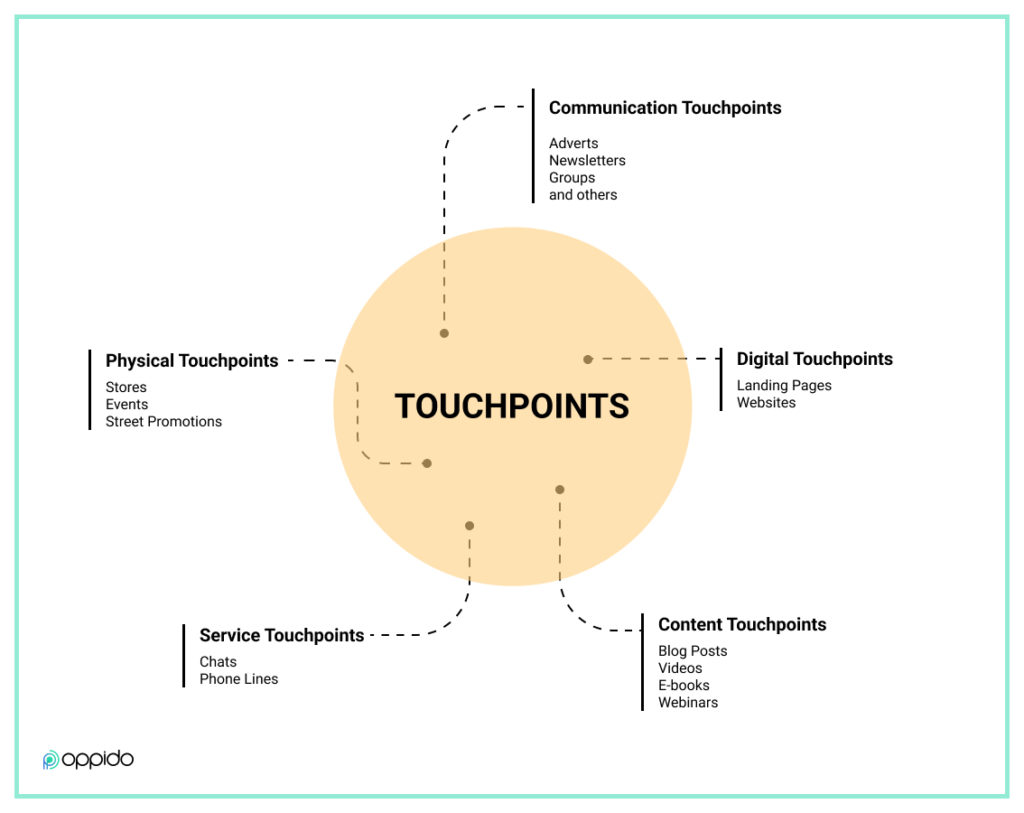In this article, we are going to explore the world of customer journeys and their mapping. We’ll explain what customer journey mapping is, how they look and what benefits you can expect from them. Finally, we’ll teach you how to prepare them comprehensively and update them for yourself. So, if you’re a strategic marketer, head of marketing or CX specialists, we strongly recommend you dedicate a couple of minutes to reading this article.
If you want to know more about designing the communication strategy, look at our latest articles for inspiration!
What Is Customer Journey Map?
Customer journey mapping is the process of creating and visualising the steps your potential customers take. It starts from the first touchpoints they have with your brand and goes all the way to the final purchase—sometimes even further to the post-purchase user experience. This process helps you visualise your customers’ experience “from their point of view,” thereby gaining a deeper understanding of them and helping you pinpoint experiences they might be missing or with which they may not be pleased.
The main aim of customer journey mapping is to increase customer experience and thus increase marketing efficiency.
Customer journey is sometimes also referred to as buyer journey, user journey or experience map.
Examples of Customer Journey Maps
Customer journey maps can have many different looks and feels.
From very simple, like this one:

All the way to very complex ones, like this one:

The traits they always have in common are:
- They always have individual touchpoints—i.e., website, blogpost, social media posts, and the like.
- They always start from the first interaction and lead towards the final purchase or post-purchase.
- They are never linear and always pass-through funnel stages—awareness, consideration and so on.
On top of that, the more complex customer journeys will also have:
- Multivariate journeys, taking into consideration the multiple touchpoint options your customers have.
- So-called return loops for cases where customers don’t tend to move forward in such cases, methodologies like remarketing are utilised.
- Conversion metrics highlight the performance and efficiency of individual touchpoints.
- Highlights on new touchpoints to be created and those to be updated in the coming periods.
Benefits of Customer Journey Maping
So why should you start creating a customer journey map for your brand or product? Here are five reasons why customer journeys are so important:
- They help you gain a deeper understanding of your customers and their experiences.
- They allow you to visualise the status-quo experience your customer currently have.
- They allow you to identify critical touchpoints you need to work on.
- They help you reduce costs on maintaining and creatine unnecessary touchpoints.
- Therefore, customer journey mapping enables you to increase customer satisfaction.
- Thus, all of the above help you increase sales and marketing ROI.
How to Do Customer Journey Mapping?
A prerequisite to customer journey mapping is a deep understanding of your customer’s needs and wants. To do this, you need to have detailed marketing personas prepared. To learn more about that topic, please read this article and this one.
The second step is to identify all your touchpoints. Marketing of communication touchpoints is all methods of communication between you and your customers. Touchpoints can fall within several different categories, including:

The next step is to lay out your touchpoints on the marketing funnel stages you use. What touchpoints are your customers most likely to use at the top of the funnel? Which one will they pass through on the way to purchase? What is (are) the desired final actions you’d like them to take? Draw this all out.
Then, start connecting the touchpoints by drawing out all the relevant possible ways your customers engage. You will start seeing that some touchpoints are used much more than others; others may not have an appropriate logical next step.
Don’t forget to add the existing return loops you currently use. Draw these as anticlockwise rotating arrows going back towards higher stages of the funnel.
Finally, look at your Google analytics reports and note down performance metrics of:
👀 Individual touchpoints—time on page, bounce rate, engagement ratings, and so forth.
👍🏻 Individual conversions—i.e., what percentage of people pass from one touch to another— you can easily visualise in the Google Analytics Behaviour Flow report.
How to Verify Customer Journey Maps?
Customer journeys are never exact. Nevertheless, it’s a good idea to verify whether they approximate reality or not. To do this, you can utilise one of the following methods:
- Use Google Analytics Behaviour Flow reports, as noted above.
- Record your website visitors using tools like HotJar (but please follow GDPR).
- Conduct UX tests and have people test out your website to see their interactions and what steps they take.
Identifying Roadblocks and Improvement Opportunities
The final step in this process is to look at the status quo customer journey and look for:
👎🏻 Touchpoints with low-performance metrics.
❗️Touchpoints that are overly burdened—are required to portray too many messages.
📉 Conversion points with low-performance metrics that might be better directed elsewhere.
❓Missing touchpoints and return loops.
Once you have these, you should prioritise them and create project plans to have them created/edited. (Psst, that’s where we can help you with Oppido!) Based on that, you should regularly update your customer journey and check for further improvements you could make. We suggest a quick check of your journey at least once a year.
After reading this article, you may feel like it’s a considerable amount of work. While we agree that may be the case initially, we are confident of the benefits it will bring you in the long run.
To summarise, customer journey maps are an exercise to help you get “into your customer’s shoes” and visualise the purchase/buyer journey honestly and comprehensively. It is one of those exercises that distil average marketers from strategic ones and significantly increase marketing performance and efficiency. Finally, this isn’t just a marketing exercise but should be a companywide one, with sales touchpoints and product touchpoints coming into play as well. We strongly recommend you start periodically analysing your customer journey now!
Further reading:
